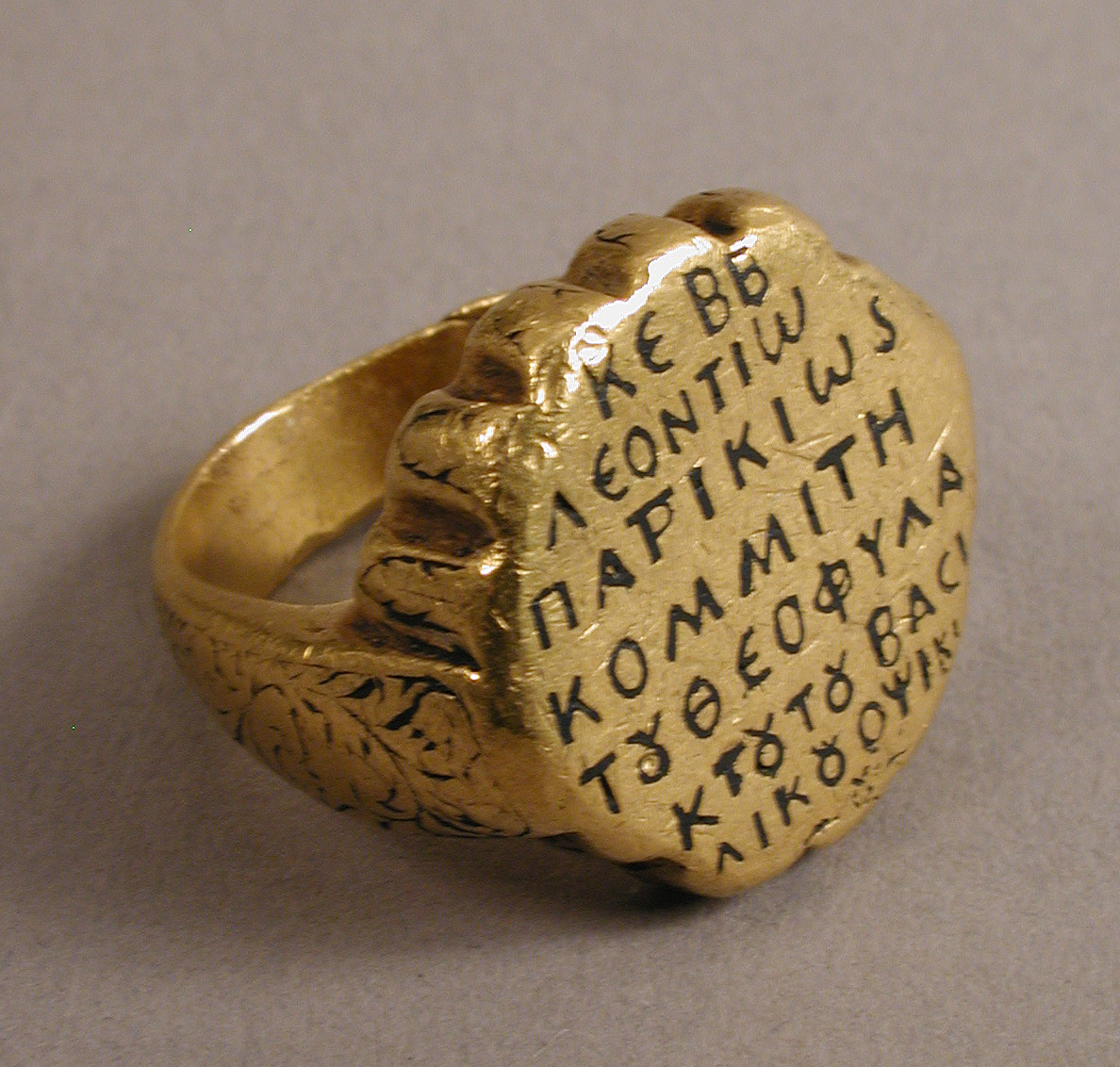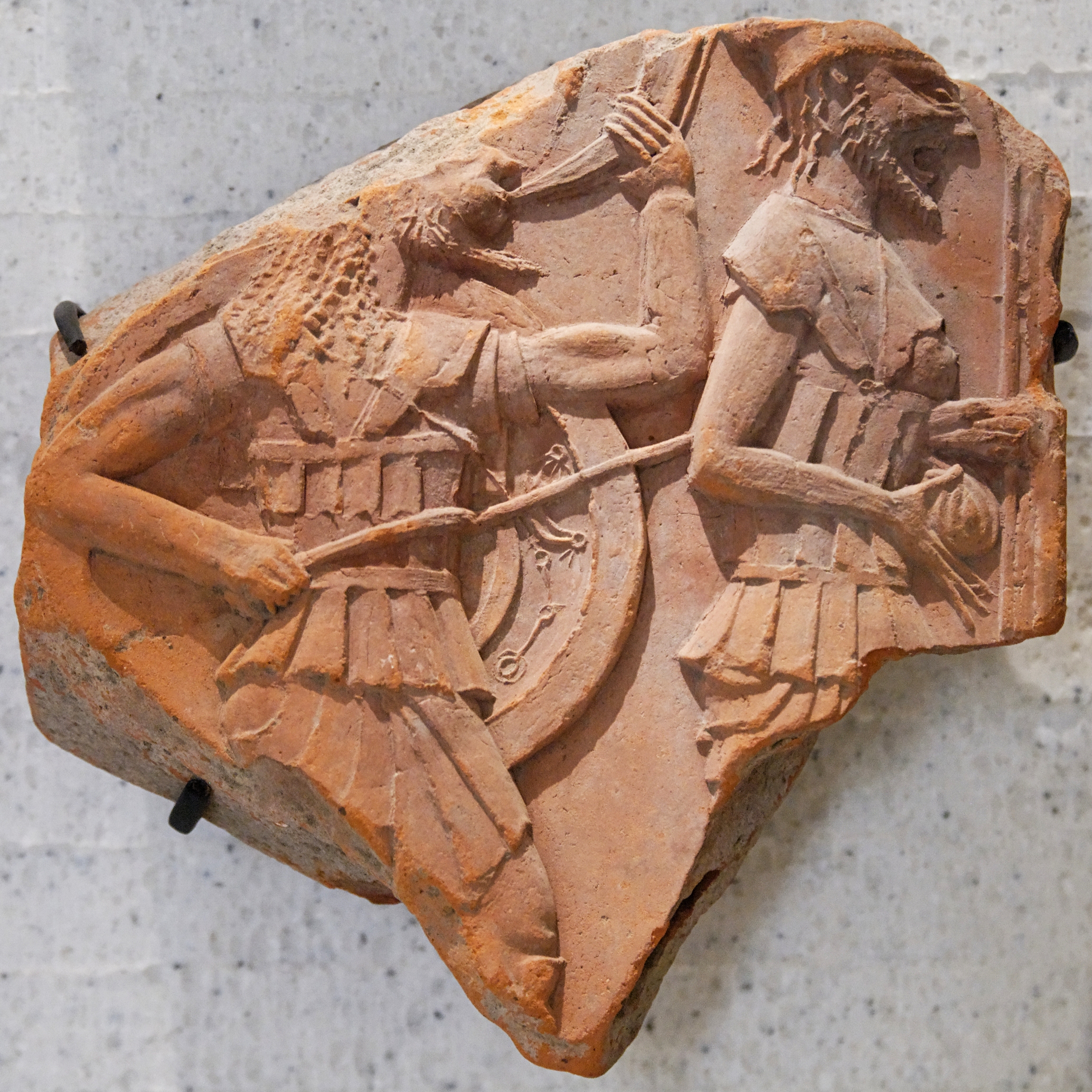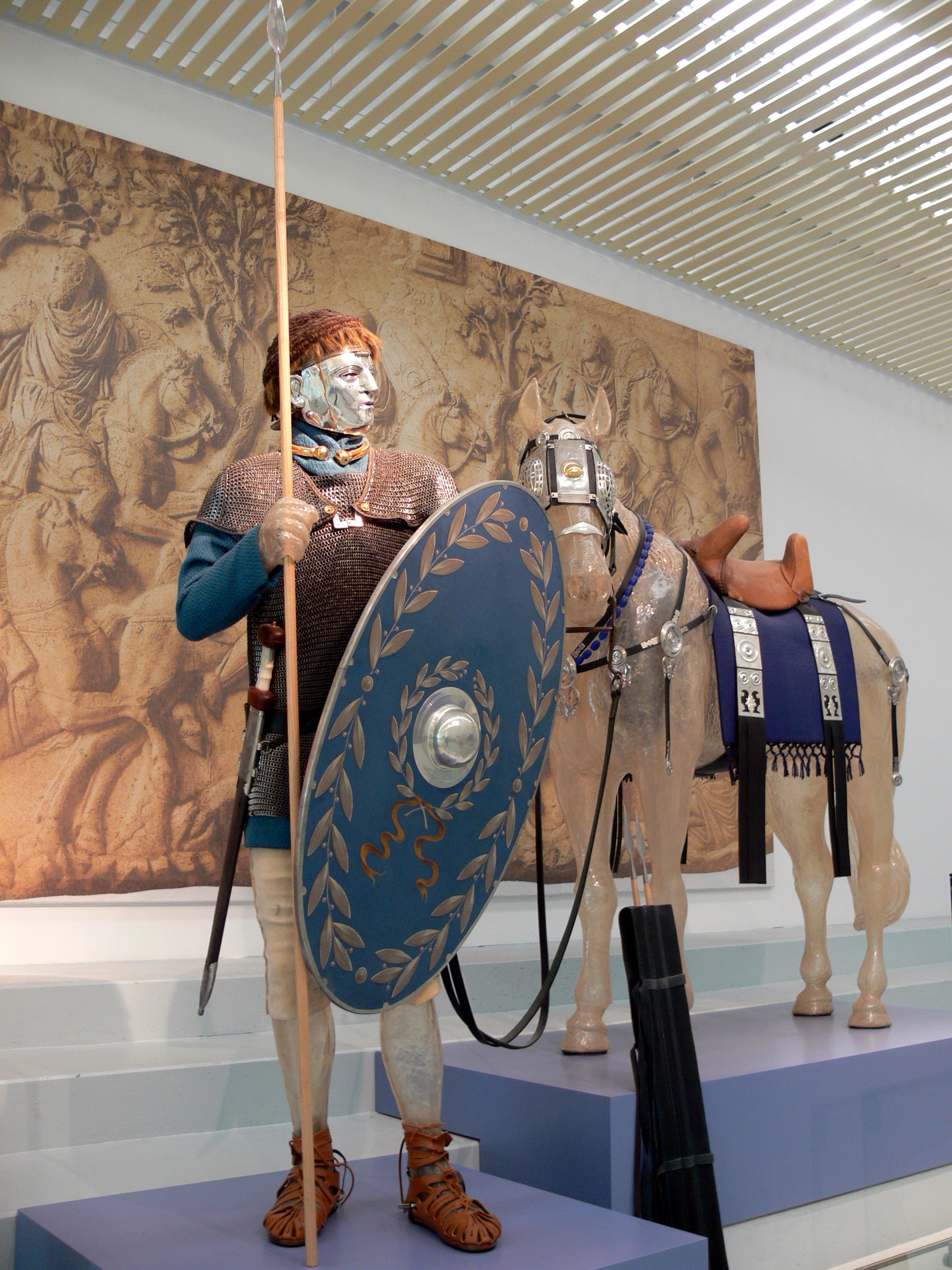|
Thrace (theme)
The Theme of Thrace () was a province (''thema'' or theme) of the Byzantine Empire located in the south-eastern Balkans, comprising varying parts of the eponymous geographic region during its history. History Traditionally, it has been held that the theme (at the time primarily a military command) was constituted in c. 680, as a response to the Bulgar threat... This is based on the mention of a certain ''patrikios'' Theodore, Count of the '' Opsikion'' and ''hypostrategos'' of Thrace, in 680/681. However, it is unclear whether this implies the existence of Thrace as a separate command, with Theodore holding a dual post, or whether Thrace was administratively united to the ''Opsikion''. In fact, separate ''strategoi'' of Thrace are not clearly attested in literary sources until 742, while seals of ''strategoi'' are also extant only from the eighth century on. Initially, Adrianople was probably the theme's capital. Under Empress Irene of Athens, in the late eighth century, the t ... [...More Info...] [...Related Items...] OR: [Wikipedia] [Google] [Baidu] |
Thracesian Theme
The Thracesian Theme (, ''Thrakēsion thema''), more properly known as the Theme of the Thracesians (, ''thema Thrakēsiōn'', often simply , ''Thrakēsioi''), was a Byzantine theme (a military-civilian province) in western Asia Minor (modern Turkey). Created either in the mid-7th or the early 8th century as the settlement of the former Army of Thrace, after which it was named, it was one of the larger and more important themes of the Empire throughout its existence based on its proximity to Constantinople. The Thracesian Theme was one of the longest-lived themes, surviving until the region was conquered by the Turks in the early 14th century. History As with the other themes, the exact date of foundation is unclear. The Thracesians are first securely attested in 711, when a "'' tourmarchēs'' of the Thracesians" named Christopher was dispatched against Cherson by Emperor Justinian II, while a governing '' stratēgos'' is only attested as late as 741.... It is hence traditiona ... [...More Info...] [...Related Items...] OR: [Wikipedia] [Google] [Baidu] |
Opsikion
The Opsician Theme (, ''thema Opsikiou'') or simply Opsikion (Greek: , from ) was a Byzantine theme (a military-civilian province) located in northwestern Asia Minor (modern Turkey). Created from the imperial retinue army, the ''Opsikion'' was the largest and most prestigious of the early themes, being located closest to Constantinople. Involved in several revolts in the 8th century, it was split in three after ca. 750, and lost its former pre-eminence. It survived as a middle-tier theme until after the Fourth Crusade. History The Opsician theme was one of the first four themes, and has its origin in the praesential armies of the East Roman army. The term ''Opsikion'' derives from the Latin term ''Obsequium'' ("retinue"), which by the early 7th century came to refer to the units escorting the emperor on campaign. It is possible that at an early stage, the ''Opsikion'' was garrisoned inside Constantinople itself. In the 640s, however, following the disastrous defeats suffered dur ... [...More Info...] [...Related Items...] OR: [Wikipedia] [Google] [Baidu] |
Diocese Of Thrace
The Diocese of Thrace (, ) was a diocese of the later Roman Empire, incorporating the provinces of the eastern Balkan Peninsula (comprising territories in modern south-eastern Romania, central and eastern Bulgaria, and Greek and Turkish Thrace). Philippopolis (modern Plovdiv, in Bulgaria) was the capital. The diocese was established as part of the reforms of Diocletian and Constantine the Great, and was headed by a '' vicarius'' subordinate to the praetorian prefecture of the East. As outlined in the of , the diocese included the provinces of Europa, Thracia, Haemimontus, Rhodope, Moesia II and Scythia Minor. In May 535, with Novel 26, Justinian I abolished the Diocese of Thrace. Its ''vicarius'' retained his rank of '' vir spectabilis'' and received the new title of ''praetor Justinianus'', uniting in his hand both civil and military authority over the provinces of the former diocese, in a crucial departure from the strict separation of authority from the Diocletianian ... [...More Info...] [...Related Items...] OR: [Wikipedia] [Google] [Baidu] |
Byzantine–Bulgarian Wars
The Byzantine–Bulgarian wars were a series of conflicts fought between the Byzantine Empire and Bulgaria which began after the Bulgars conquered parts of the Balkan peninsula after 680 AD. The Byzantine and First Bulgarian Empire continued to clash over the next century with variable success, until the Bulgarians, led by Krum of Bulgaria, Krum, inflicted a series of crushing defeats on the Byzantines. After Krum died in 814, his son Omurtag negotiated a thirty-year peace treaty. Simeon I of Bulgaria, Simeon I had multiple successful campaigns against the Byzantines during his rule from 893 to 927. His son Peter I of Bulgaria, Peter I negotiated another long-lasting peace treaty. His rule was followed by a period of decline of the Bulgarian state. In 971 John I Tzimiskes, the Byzantine emperor, subjugated much of the weakening Bulgarian Empire by defeating Boris II of Bulgaria, Boris II and capturing Preslav, the Bulgarian capital. Samuel of Bulgaria, Samuel managed to stabiliz ... [...More Info...] [...Related Items...] OR: [Wikipedia] [Google] [Baidu] |
First Bulgarian Empire
The First Bulgarian Empire (; was a medieval state that existed in Southeastern Europe between the 7th and 11th centuries AD. It was founded in 680–681 after part of the Bulgars, led by Asparuh of Bulgaria, Asparuh, moved south to the northeastern Balkans. There they secured Byzantine Empire, Byzantine recognition of their right to settle south of the Danube by Battle of Ongal, defeatingpossibly with the help of Seven Slavic tribes, local South Slavic tribesthe Byzantine army led by Constantine IV. During the 9th and 10th century, Bulgaria at the height of its power spread from the Danube Bend to the Black Sea and from the Dnieper River to the Adriatic Sea and became an important power in the region competing with the Byzantine Empire. As the state solidified its position in the Balkans, it entered into a centuries-long interaction, sometimes friendly and sometimes hostile, with the Byzantine Empire. Bulgaria emerged as Byzantium's chief antagonist to its north, resulting in ... [...More Info...] [...Related Items...] OR: [Wikipedia] [Google] [Baidu] |
Anastasian Wall
The Anastasian Wall (Greek: , ; ) or the Long Walls of Thrace (Greek: , ; Turkish: ''Uzun Duvar'') or simply Long Wall / Macron Teichos () is an ancient stone and turf fortification located west of Istanbul, Turkey, built by the Eastern Roman Empire during the late 5th century. Construction Originally some long, it stretches from Evcik İskelesi in Çatalca at the Black Sea coast across the Thracian peninsula to the coast of the Sea of Marmara at west of Silivri (ancient Selymbria). It ran from north to south through the locations what are today Karacaköy, Gümüşpınar, Pınarca, Kurfallı, Fener, Alipaşa Neighborhood and Silivri Altınorak. Remains of the wall are visible in Gümüşpınar junction in Karacaköy, Hisartepe in Yalıköy, Pınarca in İhsaniye and Kurfallı village. The wall was part of an additional outer defense system for Constantinople, capital of the Eastern Roman Empire and probably continued in use until the 7th century. The wall was named after the ... [...More Info...] [...Related Items...] OR: [Wikipedia] [Google] [Baidu] |
Ibn Al-Faqih
Aḥmad ibn Muḥammad ibn al-Faqih al-Hamadani () (fl. 902) was a 10th-century Persian historian and geographer, famous for his ''Mukhtasar Kitab al-Buldan'' ("Concise Book of Lands") written in Arabic. In the 1870s the Dutch orientalist Michael Jan de Goeje edited a selection of geography works of Arab geographers in an eight-volume series titled ''Bibliotheca geographorum Arabicorum'' published by Lugduni-Batavae (Leiden) Brill publishers Brill Academic Publishers () is a Dutch international academic publisher of books, academic journals, and Bibliographic database, databases founded in 1683, making it one of the oldest publishing houses in the Netherlands. Founded in the South .... Al-Hamadhānī's ''Mukhtasar Kitab al-Buldan'' was published in volume 5 of this series. In 1967 second editions were printed by Dar Sadir (Beirut) and E.J. Brill (Lugduni Batavorum). See also * Manuscript 5229. References * Iranian explorers 10th-century Iranian geographers ... [...More Info...] [...Related Items...] OR: [Wikipedia] [Google] [Baidu] |
Ibn Khordadbeh
Abu'l-Qasim Ubaydallah ibn Abdallah ibn Khordadbeh (; 820/825–913), commonly known as Ibn Khordadbeh (also spelled Ibn Khurradadhbih; ), was a high-ranking bureaucrat and geographer of Persian descent in the Abbasid Caliphate. He is the author of the earliest surviving Arabic book of administrative geography. Biography Ibn Khordadbeh was the son of Abdallah ibn Khordadbeh, who had governed the northern Iranian region of Tabaristan under the Abbasid caliph al-Mamun (), and in 816/17 conquered the neighbouring region of Daylam, as well as repelled the Bavandid '' ispahbadh'' (ruler) Shahriyar I () from the highlands of Tabaristan. Ibn Khordadbeh's grandfather was Khordadbeh, a former Zoroastrian who was convinced by the Barmakids to convert to Islam. He may have been the same person as Khordadbeh al-Razi, who had provided Abu'l-Hasan al-Mada'ini (died 843) the details regarding the flight of the last Sasanian emperor Yazdegerd III during the Arab conquest of Iran. Ib ... [...More Info...] [...Related Items...] OR: [Wikipedia] [Google] [Baidu] |
Arabs
Arabs (, , ; , , ) are an ethnic group mainly inhabiting the Arab world in West Asia and North Africa. A significant Arab diaspora is present in various parts of the world. Arabs have been in the Fertile Crescent for thousands of years. In the 9th century BCE, the Assyrians made written references to Arabs as inhabitants of the Levant, Mesopotamia, and Arabia. Throughout the Ancient Near East, Arabs established influential civilizations starting from 3000 BCE onwards, such as Dilmun, Gerrha, and Magan, playing a vital role in trade between Mesopotamia, and the Mediterranean. Other prominent tribes include Midian, ʿĀd, and Thamud mentioned in the Bible and Quran. Later, in 900 BCE, the Qedarites enjoyed close relations with the nearby Canaanite and Aramaean states, and their territory extended from Lower Egypt to the Southern Levant. From 1200 BCE to 110 BCE, powerful kingdoms emerged such as Saba, Lihyan, Minaean, Qataban, Hadhramaut, Awsan, and ... [...More Info...] [...Related Items...] OR: [Wikipedia] [Google] [Baidu] |
Sozopolis, Thrace
Sozopol ( ; ) is an ancient seaside town located 35 km south of Burgas on the southern Bulgarian Black Sea Coast. One of the major seaside resorts in the country, it is known for the ''Apollonia'' art and film festival (which takes place in early September) that is named after one of the town's ancient names. Part of Burgas Province and administrative centre of the homonymous Sozopol Municipality, as of December 2009, the town has a population of 5,410 inhabitants. In antiquity, the place was the site of a prosperous Greek colony named ''Antheia'' and later known as ''Apollonia.'' In 72 BC it was devastated by a Roman siege, and became a small town of lesser importance. By the first century AD, the name ''Sozopolis'' began to appear in written records. The busiest times of the year are the summer months, ranging from May to September, as tourists from around the world come to enjoy the weather, sandy beaches, history and culture, fusion cuisine (Balkan and Mediterranean), and atmo ... [...More Info...] [...Related Items...] OR: [Wikipedia] [Google] [Baidu] |
Bizye
Vize (; ; ) is a town in Kırklareli Province in the Marmara Region, Turkey, Marmara region of Turkey. It is the seat of Vize District.İlçe Belediyesi Turkey Civil Administration Departments Inventory. Retrieved 1 March 2023. Its population is 15,116 (2022). The mayor is Ercan Özalp (Republican People's Party, CHP). The town's distance to the provincial centre is . Vize is situated on State road D.020 (Turkey), state road D.020, which runs from Istanbul to Edirne via Kırklareli. In 2012 Vize was designated a Cittaslow (Slow City). History Antiquity Under the ancient name of Bizya or Bizye () Vize served as a capital for the ancient Thracians, Thracian tribe of the Asti (Thracian tribe), Asti, and was mentioned by several ancient authors. From inscr ...[...More Info...] [...Related Items...] OR: [Wikipedia] [Google] [Baidu] |
Tourmarches
A ''turma'' (; plural ''turmae''; ) was a cavalry unit in the Roman army of the Republic and Empire. In the Byzantine Empire, it became applied to the larger, regiment-sized military-administrative divisions of a '' thema''. The word is often translated as " squadron" but so is the term '' ala'', a unit that was made up of several ''turmae''. Roman army Republic In the 3rd and 2nd centuries BC, the time of the Punic Wars and Rome's expansion into Spain and Greece, the core of the Roman army was formed by citizens, augmented by contingents from Rome's allies (''socii''). The organization of the Roman legion of the period is described by the Greek historian Polybius (cf. the so-called " Polybian army"), who writes that each 4,200-strong infantry legion was accompanied by 300 citizen cavalry (''equites''). This contingent was divided into ten ''turmae''.. According to Polybius, the squadron members would elect as their officers three '' decuriones'' ("leaders of 10 men"), of whom the ... [...More Info...] [...Related Items...] OR: [Wikipedia] [Google] [Baidu] |



